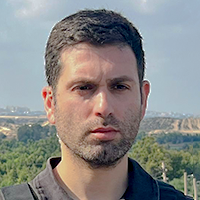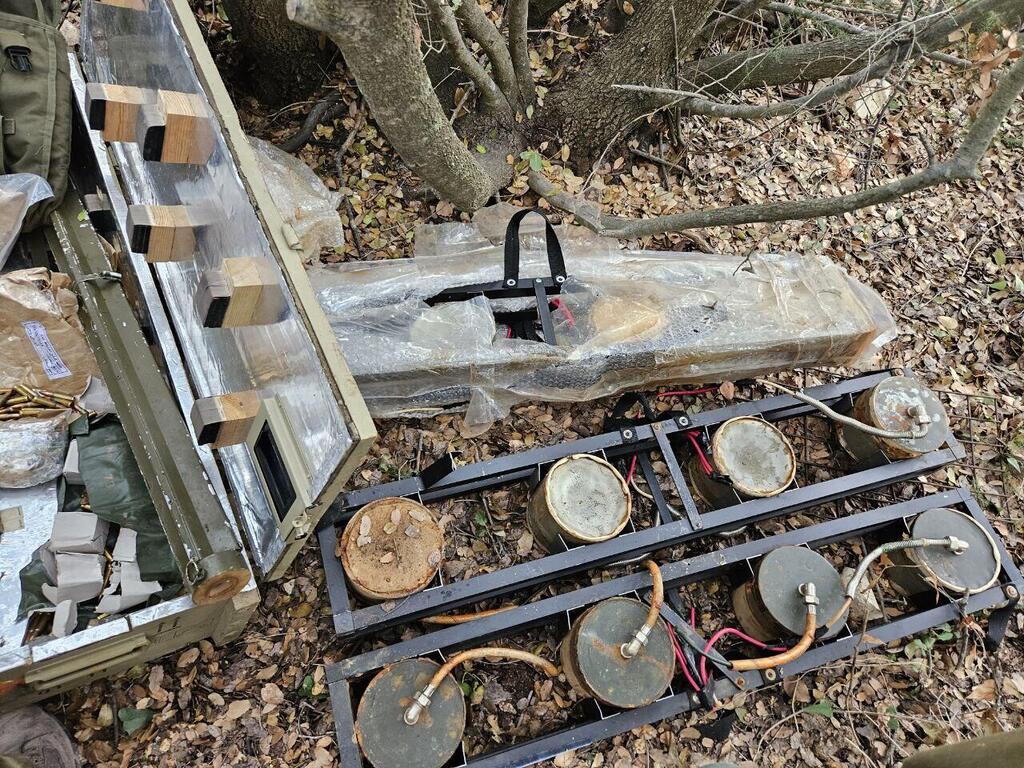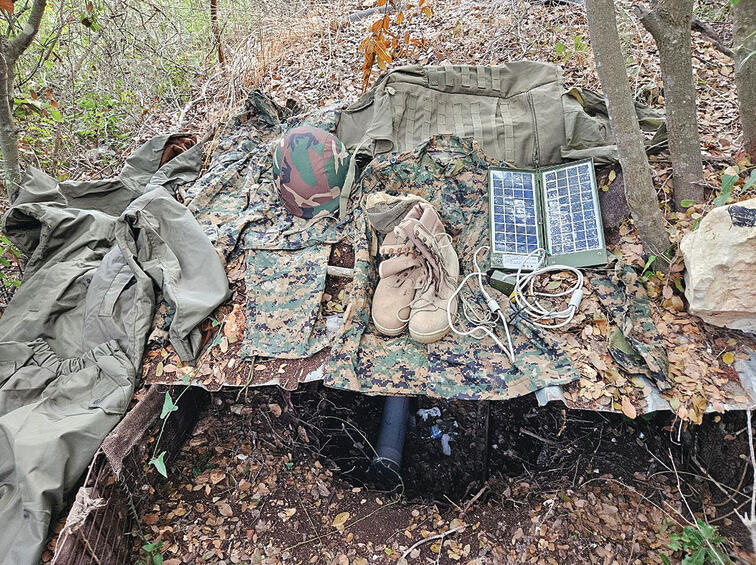Getting your Trinity Audio player ready...
Hezbollah has prepared three elite Radwan Force regiments, known as "fawjs" in Lebanese military jargon, for potential action against communities in Israel's Western Galilee. Each regiment is marked with its own tactical identifiers to prevent friendly fire, and different colored markers guide fighters through a network of hundreds of tunnels. These markers help Hezbollah fighters quickly locate their weapons caches and regroup with their units.
Underground, in Hezbollah’s logistical plan, fighters are equipped with commando knives, personal weapons (machine gunners, snipers, drivers and team leaders), communication devices, night-vision goggles, combat uniforms tailored to each fighter, Blundstone boots, storm gear, emergency food supplies, blood units and advanced first-aid kits. All of this equipment is stored in fortified thickets along the border, giving Hezbollah tactical oversight over Israeli towns like Nahariya, Kiryat Shmona and various kibbutzim and moshavim in the area.
6 View gallery


Combing every inch, IDF forces operating in southern Lebanon
(Photo: IDF Spokesperson's Unit)
The logistical plan, modeled after the IDF's 2007 logistical improvements following equipment shortages in the 2006 Lebanon War, provides personalized, modern gear for each Hezbollah fighter, similar to IDF preparations for rapid deployment to southern Lebanon.
As the IDF deepens its ground operations in Lebanon border villages, the scale of Hezbollah’s preparations is becoming clear. Senior commanders, including Prime Minister Benjamin Netanyahu and successive defense ministers, are now facing criticism for allowing Hezbollah to develop this extensive infrastructure over the past decade—described as twenty times more lethal than the arsenal used by Hamas in its attack on southern Israel on October 7 last year.
These fortified areas, once referred to as Hezbollah "nature reserves," have long been used to shield the terrorist group from Israeli military operations. In the 2006 Lebanon War, the IDF avoided entering these zones, which Hezbollah had also used during Israel’s occupation of the southern Lebanon security zone prior to its 2000 withdrawal.
Colonel Yoav Schneider, commander of the 205th Iron Fist Brigade, noted that in 2006, the IDF did not dare enter these areas. Schneider, who previously commanded the 82nd Battalion in 2019 near Gaza, had openly expressed frustration with restrictive rules of engagement that limited fire on Hamas fighters. Against Hezbollah, Schneider said, Israeli policy had been even more lenient.
6 View gallery


Knives, firearms, night-vision gear and uniforms: Hezbollah’s combat gear were stored underground
(Photo: Yoav Zitun)
Schneider now strikes a more diplomatic tone, acknowledging that the political leadership will need to finish the military’s work. However, some of his reservists are less restrained. "It would be a disaster if we revert to a policy of containment after we leave," one reservist said.
"Hezbollah will rebuild its invasion infrastructure, and it will be a tragedy for future generations. We're doing our part—the political leadership must do theirs and set a long-term policy."
Hezbollah invasion still in the cards
Lt. Col. (res.) Binyamin Tropper, one of nine siblings of MK Chili Tropper, commands a battalion under Col. Yoav Schneider’s brigade. “We’re combing every inch here,” he said.
“We walk through the thicket, suddenly sense something in the leaves, and discover yet another tunnel prepared for Hezbollah’s Radwan Force, packed with large explosives meant to breach the border wall, bags full of equipment and more. We’re clearing everything. This is what we’ve been training for since 2006. Our mission is to ensure residents of the north return home with real security, not just a ‘sense of security,’ and we’re not done yet."
IDF spokesperson Daniel Hagari exposes scope and scale of Hezbollah preparation to invade northern Israel
(Video: IDF Spokesperson's Unit)
"We’ve been here since Rosh Hashanah, through Yom Kippur and will remain through Sukkot and Simchat Torah at the earliest," Tropper added. "We’re loud and present, not operating like a special forces unit. Golani veterans are out here in force, and anyone left from Hezbollah is afraid to face us. As a veteran of the 2006 Lebanon War, I remember we didn’t dare enter these areas. Even the explosives here are wrapped to withstand winter conditions."
Brig. Gen. Yiftach Norkin, commander of the 146th Division, is operating in dual roles. While most of his brigades operate beyond the border, some of his forces are still defending the Western Galilee.
Reflecting on the situation, Norkin recalled his time as a battalion commander in the Metula sector years ago, when Hezbollah prepared to launch a massacre of the local population from the opposing border village of Kfarkela.
“We’ll learn from this and investigate what we saw and didn’t see over the years,” Norkin said. “The key now is to complete the mission. Discovering the scope and spread of their preparations was significant. We were surprised to find that the weapons were positioned so far forward. We had expected them to be further back.”
Some of the battalion and brigade commanders from those earlier years, now uncovering the extent of Hezbollah’s preparations, are shocked that they were tasked with defending civilians while a lethal, state-level threat was growing right in front of them.
6 View gallery


One of hundreds of tunnel shafts leading to underground Radwan Force weapons stores uncovered by IDF forces in southern Lebanon
(Photo: Yoav Zitun)
Despite most of its forces being deployed in Lebanon, the 146th Division remains on alert for infiltration attempts into the Galilee. Hezbollah has trained hundreds of Palestinian terrorists in the western sector, some affiliated with Hamas, who could attempt to breach the border if an opportunity arises.
Senior Northern Command officers warn of this exact scenario, noting that while the IDF is on the offensive and confident in its capabilities, complacency could set in as the weeks go by, despite ongoing airstrikes on Hezbollah targets.
Under UNIFIL's nose
In a Lebanese-controlled area with a clear view of Israel's Western Galilee and the Haifa University towers in the distance, a square iron door hidden among the bushes opens to a 30-foot-deep underground bunker. The bunker is connected by tunnels to nearby rooms storing Hezbollah’s Radwan Force’s weapons and supplies.
Less than 300 feet away are an IDF post and a UNIFIL position, both close enough to have likely seen or heard the years-long digging and equipping of the site, despite the dense thicket concealing it.
6 View gallery


Ynet military correspondent Yoav Zitun (right) with IDF forces in southern Lebanon
(Photo: IDF Spokesperson's Unit)
The military supplies—heavy boxes of weapons and ammunition—must have been transported above ground, as there is no tunnel connecting the site to nearby Lebanese villages. Despite the cover of dense vegetation, concealing such an operation, especially over years, would be difficult. Camouflaged explosives are even suspended in the treetops, ready to target any Israeli forces that dare to enter.
“This isn’t a temporary setup, but rather a network of military positions, tunnels and bunkers, like those built in Vietnam, all under UNIFIL’s nose,” Israeli officers explained. “The weapons are of the highest quality, made in Iran and Russia.”
“We respect UNIFIL, and there was no intent to harm them during recent events. We’re investigating those incidents,” said Brig. Gen. Norkin. “But this is a complex combat environment, and when attacking in such areas, mistakes can happen.”
Col. Dvir Diamond, commander of the Carmeli Brigade operating in the sector, stepped into his role without a formal transition and was immediately thrown into the fray. His dark protective glasses cover the eye he lost in Gaza during 2014’s Operation Protective Edge.
Previously, as the commander of the elite Duvdevan Unit, he preferred to stay in the shadows, and even now, he lets his soldiers speak for him. Diamond was at the forefront during the massacre at Kibbutz Kfar Aza on October 7, losing soldiers in the battle, while his unit continued to excel in operations in the West Bank and Khan Younis.
His colleague, Col. Schneider, vowed, “We will do whatever it takes to prevent Hezbollah from returning here. We now realize we cannot go back to the situation we were in. Hezbollah is battered, with many of its commanders eliminated, creating chaos within the group. Right now, they don’t want to engage with us and are abandoning their infrastructure to save themselves.”
A reserve officer, armed with a chainsaw, began cutting through the thick vegetation—a small effort, but part of a larger operation. The IDF has promised a significant clearing of Hezbollah’s “terror jungle” as the campaign continues.
Get the Ynetnews app on your smartphone:








